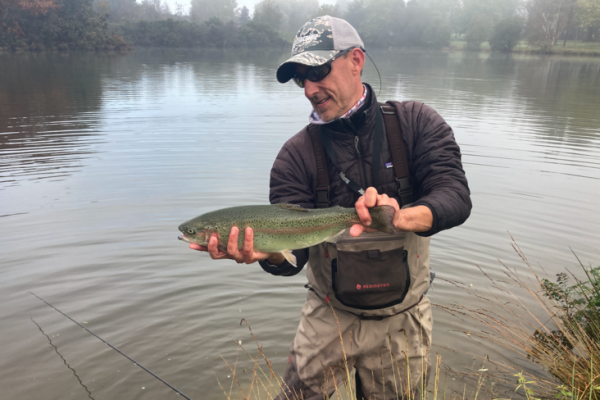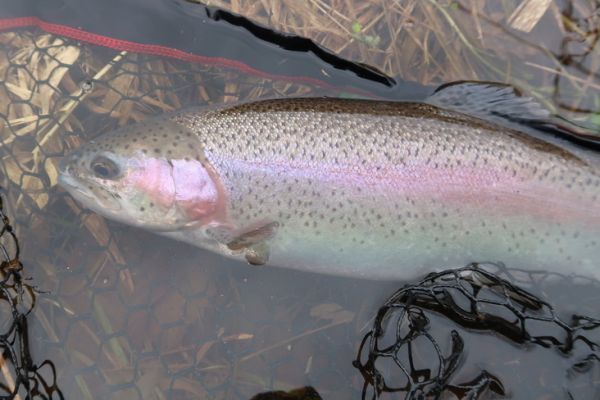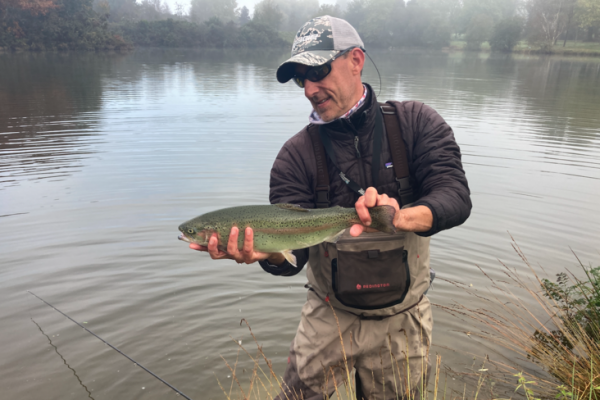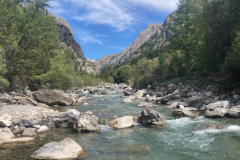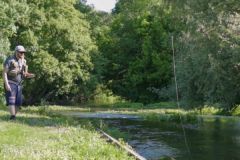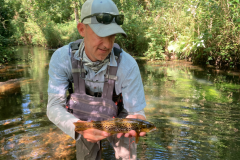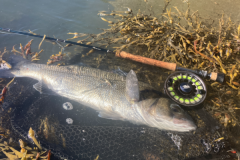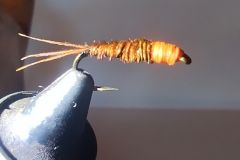What is washing line fishing?
Washing line" is a technique developed by Anglo-Saxon reservoir anglers. In most cases, a floating fly is used to keep one or two flies, usually small nymphs, in the water, often close to the surface, although variations do exist.
It's becoming increasingly popular in France, and can be used to fool educated fish or simply to present nymphs in a different way, often with chironomids, but not exclusively.
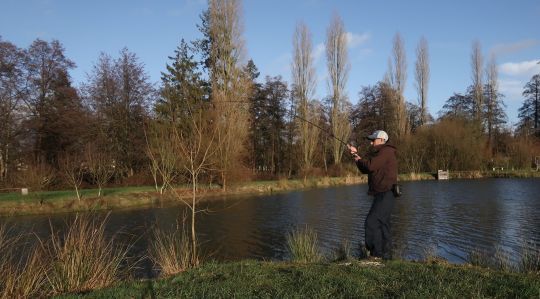
What equipment should I use?
It's common to use a 10-foot rod for a 7 or 8 line, but it's possible to fish with a 6-power rod when conditions are right.
We use different bristles depending on what we want to do, but above all on the activity of the fish and their position in the water.
In most cases, a floating line will be used, but an intermediate-tip line such as the Rio Midge-tip or long midge-tip will allow you to quickly bring the flies down to the required depth and tension the leader.
In other situations, when it's windy or the fish are a notch lower in the water column, we can use a slow or fast intermediate line, and possibly an S3 sink line to suspend our flies deeper, especially in deep lakes and if the trout are less close to the surface.
When fishing with floating line or midge-tip, the most commonly used, the leader will be simple and made of fluorocarbon for these characteristics: invisibility, higher density than water, and stiffness. Depending on the size of the fish, their wary nature and the color of the water, you can use 16° to 20° (rarely more, but sometimes you have to go down to 14°). It will be made up of 2 or ideally 3 flies, which allows you to present several nymphs (2) mounted on stems, spaced at around 1.20 to 1.50 apart, with a last strand of identical size or slightly shorter to carry the floating tip fly.
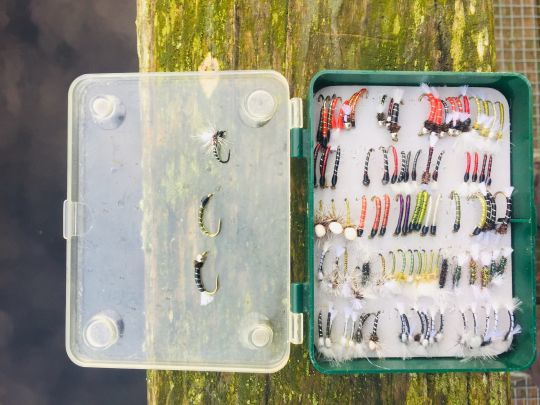
Which flies to use?
In floating silk or midge-tip, the tip fly will often be a booby which acts perfectly as a float, but which can also attract trout from a distance. They may take the booby or come to it and take one of the nymphs.
It's also common to use a FAB (a blob with a foam butt), an imitation cousin (tipule) made of foam, or a large, well-greased dry fly or one made of deer hair. The aim is to keep the flies close to the surface. Tippet flies will also catch fish, so choose your fly according to fish behavior and don't hesitate to change models as well.
Nymphs can be unweighted chironomids of various sizes and colors, or a cormorant, a diawl bach or a small ORL (Hare's Ear) nymph, a pheasant tail or any other nymph.
We can do the same with slow intermediate silk.
With fast intermediate or S3 sink lines, we can still use a booby or FAB (foam arse blob) for the same reasons as above, but in certain situations, a blob can be used. Instead of suspending the flies, it sinks smoothly, allowing you to search at different heights. This can be very useful for searching for fish.
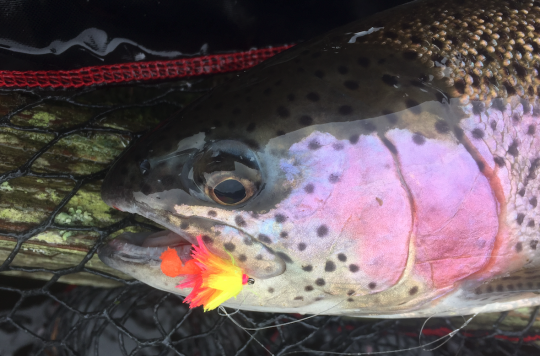
What does it look like in action?
It's important to make a good cast so that the leader is taut and the flies are fishing right away. On impact, marauding trout can quickly become interested in our flies.
In the opposite case, when you make a rough cast, you need to make a more or less long pull to tighten your leader and position it correctly.
With a floating line, the aim is to let the flies fish without doing anything. Static fishing is very addictive, believe me, especially on educated fish that are wary of all animated flies. If it's windy, the flies will fish even better, because they'll "work" on their own, and the fish will be even less wary.
With slow intermediate silk, you can work in the same way. The surface fly often sinks. This is no problem at all.
Touches are either felt in the hand, the one holding the fly line, or visual. You must constantly look at the tip of your line or at the floating fly.
On fast intermediate or S3 sink lines, it's common to animate your flies with a light knot alternating with a pause. The flies rise and fall in the water layer, which is very attractive. The touch is often sensitive as there are no more floating flies on the surface, but you must always watch the tip of your line, as fine touches can occur.
In most cases, the bites are violent. You need to keep an angle to avoid breakage and let the leader and line stretch before lifting the rod gently. But beware: on some days, the tiniest pulls can happen frequently.
Floating silk or midge-tip assembly:
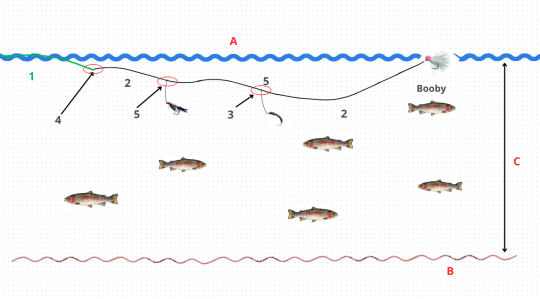
Tip fly: booby, FAB, large dry fly or even a crane fly.
The fly keeps the nymphs close to the surface.
Legends
1- Floating silk or midge tip
2- 16° to 20° leaders
3- Stem
4- Lead line connection
5- Surgical node
A- Water surface
B- Background
C- Depth
Assembly in slow intermediate silk :
Tip fly: booby, FAB, foam tip.
The flies will be suspended a little lower below the surface.
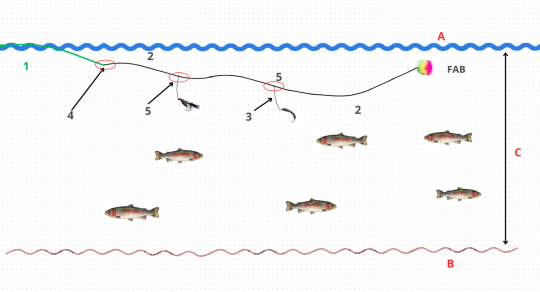
Legends
1- Slow intermediate silk
2- 16° to 20° leaders
3- Stem
4- Lead line connection
5- Surgical node
A- Water surface
B- Background
C- Depth

 /
/ 